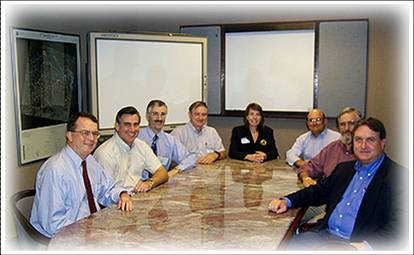Understanding Value for Buyers in Complex Sales
Who do you sell to? That’s a simple question that we’ve asked thousands of salespeople over the past few years. The answers are always interesting and typically focus on either a description of a business segment (e.g., “I sell to Financial Services companies of over $1 billion in revenue”) or a business function (e.g., “I sell into IT security departments”).
It is infrequent that salespeople tell us about selling to a network of decision-makers who are involved in making buying decisions for their organizations. Yet what we call “agreement networks” are the reality of a shift in how companies buy today. Agreement networks have forever changed the rules on salespeople, requiring new levels of understanding of how multiple buyers perceive value during their buying process.
Why is selling getting more complex?
- Business problems involve an interconnected web of domains and processes
- Selling into an agreement network involves multiple people
- Agreement networks require multiple “sales”
Where is complex selling encountered?
Complex selling is typically considered to be present in large organizations such as multinational companies and federal or regional government. Even midsize companies can have complex buying environments. You know you're in complex sales when the organizations are comprised of different domains (divisions, functions, departments, and groups or teams) each with some level of budget, workflows, and processes of the company are across domains, and decisions are made by a group of leaders, rather than an individual.
Selling is complex
Salespeople have been taught for more than a hundred years to go looking for budget (e.g., budget, authority, need, timeline). In the past, a solitary leader had the authority to make substantial purchase decisions. This is what most companies' current sales models have been built upon. However, because of the increase in cross-functional workflows and processes, and the increasing power of sourcing organizations, how projects and initiatives get funded is now most often decided by multiple executives who pool funding across functions or departments. Today, a domain leader may want to say “yes,” but peers and superiors who are within the agreement network for a decision can easily say “no.”

Where is the value?
IF what you are selling requires that multiple people (buyers) must say “yes,” then your company must equip salespeople with the ability to navigate and influence complex buying organizations (and even help their buyers do this internally). To ensure selling success, the dynamics of agreement networks means that not only must salespeople identify who must say yes, but they must understand how each buyer in the agreement network perceives value and influence that.
What does Value mean to each buyer?
Making the (inaccurate) assumption that all salespeople will find all of the buyers in an agreement network for what they are selling, salespeople still make the self-sabotaging mistakes of believing that value is
- from the perspective of “the company” rather than each buyer’s perspective
- the same thing as their bullet-pointed benefit statements
- the return on investment (ROI)
- what they (the salesperson) thinks it is
- what their sponsor or “primary contact” says it is
In complex sales, the reality is that Value is the composite perception of all of the buyers who can say “no” or even who can torpedo the sale if it is made. The perception of each of these buyers is based upon what results (impact) they expect from investing (cost) in the “solution” (only customers can call it a solution, because the solution is based upon their perception of value), and what risk they see or feel.

Each buyer’s perception of Impact, Cost, and Risk varies by their functional role, their altitude within the organization, and their own situation and experiences.
- One buyer’s perspective of a “big impact” may be perceived as trivial by another buyer in the agreement network who is at a different altitude level or may be considering how these funds may be better utilized in some other initiative.
- What is viewed as high cost to one leader may seem trivial to another in the context of how a workflow improvement may positively impact the overall business.
- What is perceived as virtually no risk to several leaders may be perceived as unacceptably high risk by another leader who has insights that the other leaders do not yet have.
Ultimately, salespeople cannot solely influence the perceptions of impact, cost, and risk of every decision maker in an agreement network. However they must recognize that these are the elements that comprise buyers’ perception of value and strive to understand these value perceptions. They must work to understanding each buyer’s “value equation” and each buyer’s role in an agreement network.
For sales managers, this means identifying gaps in skills for complex selling, and reaching into the supply chain to the sales organization to close that gap. It also means working closely with reps to practice and coach through scenarios. For sales trainers, it means developing the sales force to understand selling into agreement networks. It means developing salespeople to discover multiple buyers' perception of value, and better understanding the roles of specific types of buyers and the challenges faced by those buyers so that salespeople can have successful meetings with buyers who are at different altitudes (e.g. CXO, VP, director, manager) in in different functional roles. For HR sales recruiters, it means looking for (and assessing) different skill sets and experience.
Complex selling requires both hard work and smart work. It’s the work that companies must equip their salespeople to do, and expect them today, in today’s complex buying/selling environment.